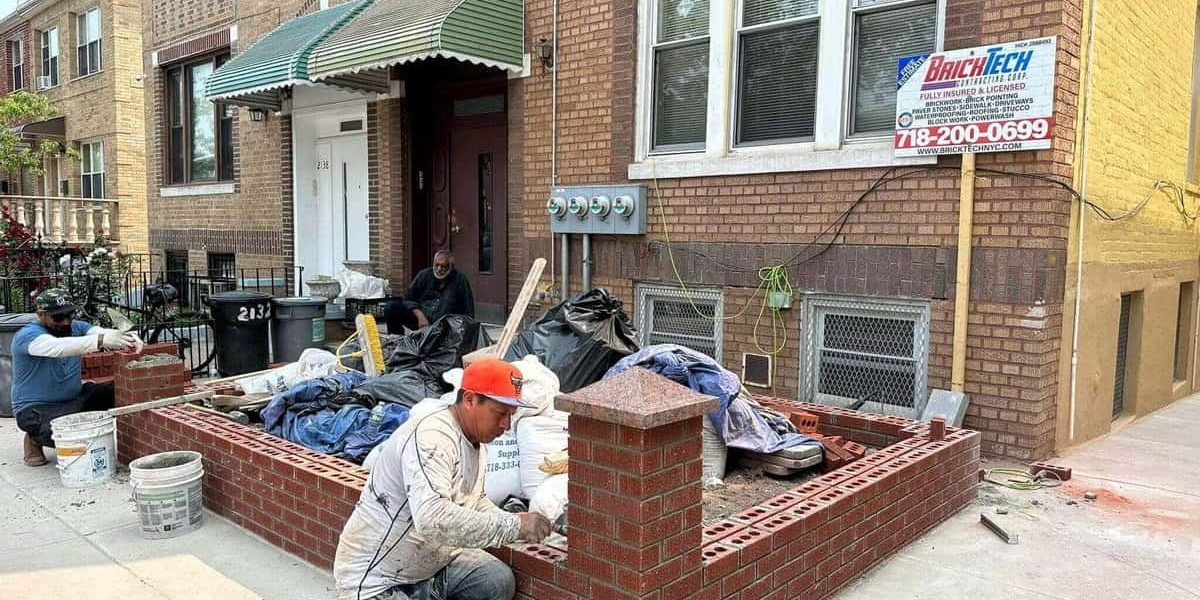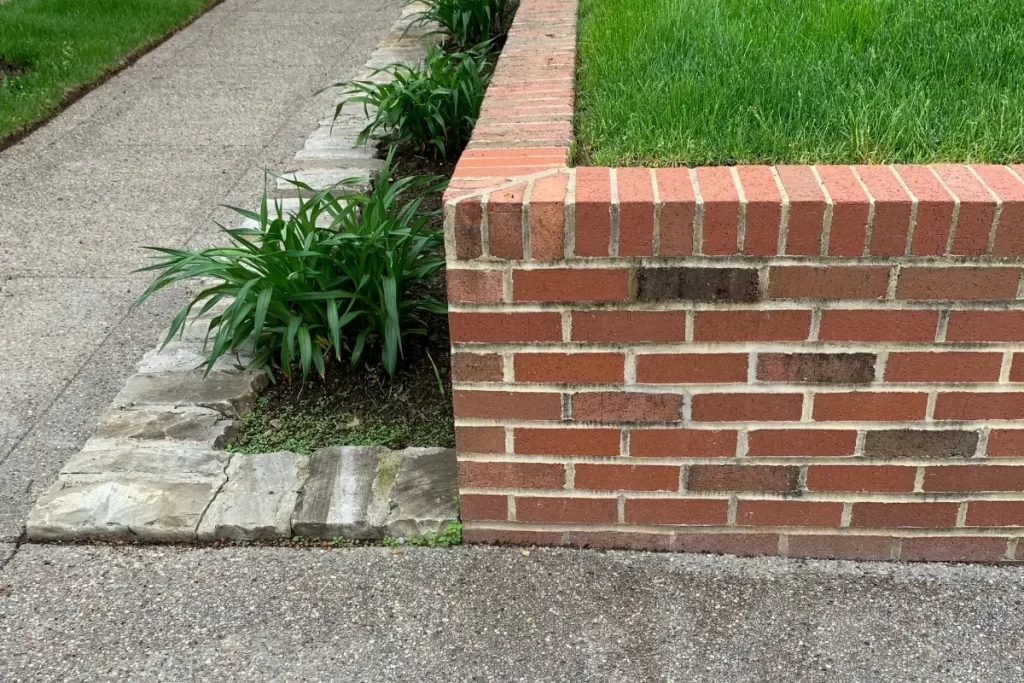Retaining walls are essential elements in many landscaping projects. They serve multiple purposes: managing slopes, preventing soil erosion, and even adding a beautiful touch to your outdoor space. But like any structure, retaining walls require regular maintenance and occasional repairs to stay strong and effective. This guide explores the fundamentals of retaining wall upkeep, identifying common issues, and tackling DIY repairs within your capabilities.
Understanding Your Retaining Wall
Retaining walls come in various types, including brick, stone, concrete, and wood. Each has its unique maintenance needs and common issues. The basic components of a retaining wall include the wall material, drainage system, and footing or foundation. Typically, retaining walls can last between 50 to 100 years, given that they’re correctly built and maintained. Recognizing the type of your retaining wall and understanding its structure is the first step to its successful upkeep.
Types of Retaining Walls and Their Unique Needs
Brick Retaining Walls: Durable and robust, brick walls provide a classic aesthetic and significant strength. They typically require less maintenance, but the mortar joints between bricks can degrade over time and may need periodic attention.
Stone Retaining Walls: These can be built using either natural stone or manufactured stones. Stone walls blend naturally into landscapes and offer high durability. However, they may require more frequent checks for displaced stones or failed mortar.
Wood Retaining Walls: Often made from treated timbers, these walls provide an organic, rustic appeal. While wood is less durable than brick or stone, proper treatment can protect it from rot and pests. Regularly inspect for decay and reapply sealant as recommended by the product manufacturer.
Concrete Retaining Walls: These are often the most durable and long-lasting. They can stand up to most weather conditions and require minimal maintenance. The most common issue with concrete walls is cracking due to pressure or weather changes.
The Basic Components of a Retaining Wall
While retaining walls vary in materials and design, their basic components are similar:
Wall Face: This is the visible part of the wall made from your chosen material, like brick, stone, wood, or concrete.
Drainage System: Proper drainage is crucial in a retaining wall to prevent water build-up, which can cause pressure and damage. This system often consists of gravel backfill and drainage pipes.
Footings or Foundation: This is the base of the wall, usually made from concrete. It bears the weight of the wall and the load it retains.
Routine Maintenance for Retaining Walls
A well-maintained retaining wall can prevent many potential problems down the line. Here’s how to keep your wall in top shape:
Regular Inspections: Especially after heavy rain or snowfall, check for signs of damage like cracks, leaning, or bulging.
Keep it Clean: Clear away vegetation and debris that can trap moisture or destabilize the wall.
Drainage is Key: Ensure water can drain properly through designated outlets to prevent pressure build-up behind the wall. You can clean clogged weep holes or drainage pipes yourself.
Recognizing Signs of Damage
Despite your best efforts, retaining walls can show signs of damage over time. Here’s what to watch out for:
Tilting or Leaning: This is a serious issue and requires professional attention immediately.
Cracks: Small cracks may not be a major concern, but consult a professional for large cracks or cracks that show movement.
Bulges or Leaks: These signs indicate significant pressure behind the wall and require professional help.
Basic Repair Procedures for Retaining Walls
Understanding the basics of retaining wall repair can empower you to address minor issues promptly, which in turn can extend the life of your wall. Here’s how to handle some of the most common problems:
How to Repair Small Cracks and Chips
For small cracks and chips in brick, stone, or concrete walls, use a ready-to-use masonry patching compound according to the product instructions. Clean the area, apply the compound, smooth it out, and let it cure. For wooden walls, use wood filler or putty, and stain or paint to match the surrounding area.
Fixing Loose or Dislodged Stones/Bricks
Remove the loose material, clean the space and the stone or brick, and apply a layer of construction adhesive or mortar. Reset the brick or stone, ensuring proper alignment. Apply additional mortar around the edges to secure it.
Addressing Drainage Issues
Drainage problems can often be resolved by cleaning the drainage system. Start by checking the weep holes or pipes for blockages and clear any you find. If water is not draining correctly from the backfill area, you may need to add or replace the gravel to improve permeability. For more significant drainage issues, such as a need for additional drains or a complete drainage system overhaul, it’s usually best to seek professional help.
When to Replace Sections of the Wall
In some cases, the damage may be too extensive for DIY repairs. Here’s when to call in a professional:
- Significant tilting or leaning of the wall
- Large cracks or cracks showing movement
- Extensive rot or pest damage (for wooden walls)
Safety Precautions During DIY Repairs
Safety should always be your top priority when tackling any DIY project, especially those involving retaining walls. Here are some essential safety tips to remember:
- Wear proper protective gear: This includes gloves, safety glasses, and sturdy shoes with good grip.
- Be mindful of falling debris: Wear a hard hat if working overhead or near unstable sections of the wall.
- Work with a buddy: Especially for heavier tasks, having a helper can ensure your safety and make the job easier.
- Don’t overestimate your abilities: If a repair seems too complex or the wall shows significant damage, don’t hesitate to call a professional.
When to Call a Professional
While some retaining wall maintenance and minor repairs can be tackled as DIY projects, there are situations where professional help is crucial. Here’s when it’s best to call in a pro:
- Major structural issues: Significant tilting, leaning, bulging, or large cracks with movement require professional assessment and repair.
- Extensive damage: When a large section of the wall is damaged by rot, pests, or weather, professional expertise is necessary for a safe and lasting repair.
- Drainage overhaul: Complex drainage problems beyond simple cleaning may require professional installation of new drains or a complete drainage system redesign.
- Replacing large sections: Rebuilding a large portion of the wall is a significant undertaking best left to experienced retaining wall contractors.
Remember: Consulting a professional for an inspection is always a wise decision, especially if you’re unsure about the extent of damage or the repairs needed. They can provide valuable advice and ensure your retaining wall remains safe and functional for years to come.
Prevention: Tips for Long-lasting Retaining Walls
Prevention is the best way to avoid major repair costs in the future. Here are some tips to keep your retaining wall sturdy for years to come:
- Quality Construction: A well-constructed wall from the start significantly reduces the need for future repairs.
- Proper Drainage: Make sure your wall has an effective drainage system to prevent water pressure build-up.
- Regular Inspections: Regularly inspect your wall, especially after heavy rainfall or snowfall.
- Early Repairs: Address minor issues promptly before they become larger, more expensive problems.
Conclusion
Maintaining and repairing a retaining wall may seem daunting, but with the right knowledge and resources, you can ensure your wall’s longevity. Regular maintenance, timely repairs, and knowing when to call professionals can save you from major repair expenses down the line.
At Brick Tech Contracting Corp, we are ready to assist you with your retaining wall needs. We offer a broad range of services, from custom building to masonry, all within your budget. Our experienced team has handled all sorts of building projects, ensuring optimal outcomes for your retaining wall maintenance and repair.
Got a retaining wall that needs professional attention? Trust in Brick Tech Contracting Corp’s expertise for reliable, high-quality service. Contact us at your convenience, and let’s ensure your retaining wall stands the test of time.
Learn More: 10 Things You Need to Know Before Repairing Your Driveway in NYC










